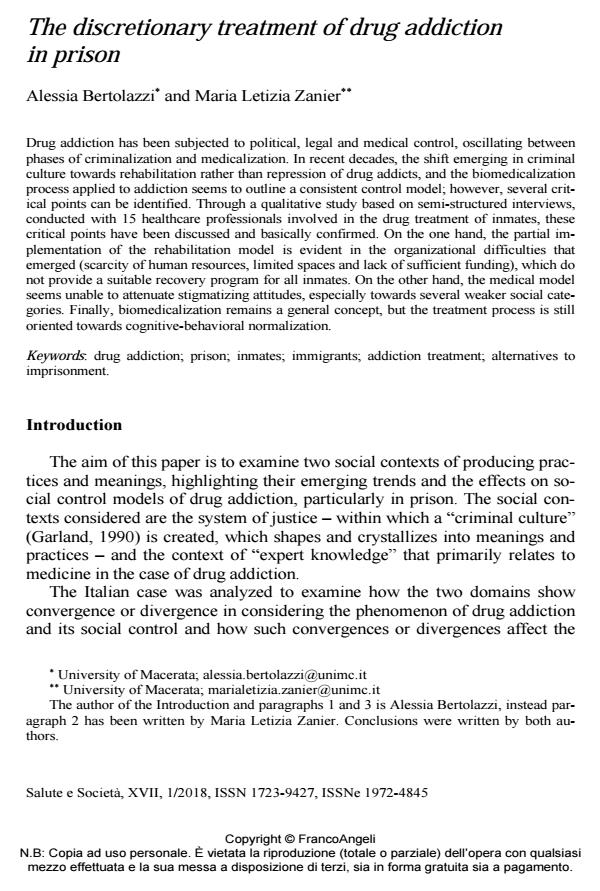The discretionary treatment of drug addiction in prison
Titolo Rivista SALUTE E SOCIETÀ
Autori/Curatori Alessia Bertolazzi, Maria Letizia Zanier
Anno di pubblicazione 2018 Fascicolo 2018/1
Lingua Inglese Numero pagine 14 P. 59-72 Dimensione file 205 KB
DOI 10.3280/SES2018-001005
Il DOI è il codice a barre della proprietà intellettuale: per saperne di più
clicca qui
Qui sotto puoi vedere in anteprima la prima pagina di questo articolo.
Se questo articolo ti interessa, lo puoi acquistare (e scaricare in formato pdf) seguendo le facili indicazioni per acquistare il download credit. Acquista Download Credits per scaricare questo Articolo in formato PDF

FrancoAngeli è membro della Publishers International Linking Association, Inc (PILA)associazione indipendente e non profit per facilitare (attraverso i servizi tecnologici implementati da CrossRef.org) l’accesso degli studiosi ai contenuti digitali nelle pubblicazioni professionali e scientifiche
Drug addiction has been subjected to political, legal and medical control, oscillating between phases of criminalization and medicalization. In recent decades, the shift emerging in criminal culture towards rehabilitation rather than repression of drug addicts, and the biomedicalization process applied to addiction seems to outline a consistent control model; however, several critical points can be identified. Through a qualitative study based on semi-structured interviews, conducted with 15 healthcare professionals involved in the drug treatment of inmates, these critical points have been discussed and basically confirmed. On the one hand, the partial implementation of the rehabilitation model is evident in the organizational difficulties that emerged (scarcity of human resources, limited spaces and lack of sufficient funding), which do not provide a suitable recovery program for all inmates. On the other hand, the medical model seems unable to attenuate stigmatizing attitudes, especially towards several weaker social categories. Finally, biomedicalization remains a general concept, but the treatment process is still oriented towards cognitive-behavioral normalization.
Parole chiave:Drug addiction; prison; inmates; immigrants; addiction treatment; alternatives to imprisonment.
- Legal culture and professional cultures in the prison system Alvise Sbraccia, Francesca Vianello, in Oñati Socio-Legal Series /2022 pp.1463
DOI: 10.35295/osls.iisl/0000-0000-0000-1324
Alessia Bertolazzi, Maria Letizia Zanier, The discretionary treatment of drug addiction in prison in "SALUTE E SOCIETÀ" 1/2018, pp 59-72, DOI: 10.3280/SES2018-001005